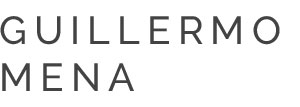Residency
Project
EAC ( Contemporary Art Space ) Montevideo, Uruguay. 2019
Curated by. Lucia Pittaluga


«Whoever tries to approach his own past must behave like a man who digs. […] For the states of things are only storage, layers, which only after the most careful exploration deliver what are the real values that are hidden inside the Earth. »
Walter Benjamin
The Place of Urgency
There is something that crosses the trees and fires of the world. Something between heaven and earth for the phenomenon to happen. As if the primitive mystery of transforming matter and revealing substance were located in them.
As in an alchemical ceremony, the artistic action of Guillermo Mena transforms the plant material before our eyes, combustes the wood collected in the ex-prison and surroundings and transforms it into coal. The artist reveals another form of the tree’s existence, making it a raw material for his work, a primitive and ancestral tool, a trace and a shout. It is in the carbonization where all the memories and all times are found: that of the seed, that of the branch, but also the suspended and timeless time of the cave.
A fleeting glance at the room reveals the choice of a radical monochrome, where everything seems absorbed by a dense darkness. If we look closely, each line that becomes a stain or a blur leads and is drawn from the small and sometimes imperceptible spaces of clarity. It is through these white wall spaces that coal reveals its urgency and it is in that confrontation that intense black rises and vibrates. Mena shouts into space saturating him and establishing a measure between the walls and us, between the drawn space and the building, between the ex-prison and the cosmos.
Its carbon trail unleashes a circular process that begins with a certain fire ceremony and circulates like an Ensō * drawing with what is obtained on the wall, then rubbing the paper on it and recidivizing in its cycle: carbonization, monocopy and new beginning. A sort of accumulation of subtle, perpetual and indefinite memory.
G.M. wrappes in paper and translates his own body into drawing, walking. Against the walls he drags, breaks, scrapes. It is the direct physical action, trying to manipulate the enormous paper on the surface, which amplifies the discourse and proposes an investigation of the body’s action on matter.
For this, he configures subtle choreographies of accumulation and loss, actioning a loop of meanings that are activated in permanent reconstruction.
The extraction work does not stop. The charcoal becomes endless in the constant unfolding of producing images; in other cases, he drags smaller papers making them waver between the action and the stain, between the shadow and the light.
A thought fills the immensity, says William Blake in his Proverbs of Hell, and perhaps the place where the images of charred clarity inhabit is the forest where the first question was cradled and it is in the thought where it remains unanswered.
In the myth of Plato’s cave, Socrates asks Glaucon to imagine a group of prisoners who have been chained since childhood behind a wall, inside a cave. There, a fire illuminates on the other side of the wall, and the prisoners see the shadows cast by objects that are on this wall, which are manipulated by other people who pass behind. Socrates tells Glaucón that the prisoners believe that what they observe is the real world, without realizing that they are only the appearances of the shadows of those objects. Later, one of the prisoners manages to free himself from his chains and begins to ascend. He observes the light of the fire beyond the wall, whose glow blinds him and almost brings him back to darkness. Little by little, the liberated man becomes accustomed to the firelight and, with some difficulty, decides to go outside, where he first observes the reflections and shadows of things and people, and then sees them directly. When he descends again to invite his companions to ascend, they do not believe him and do not accompany him.
Mena proposes an extraction of the ancient knowledge of the cave, involves us in new ways of thinking and challenges our visuality and beliefs. Call to pay attention to the clarity of the fissures where the light slips, and allows to recognize the silhouette of the drawn. A certain state of lucidity of thinking by doing, where all times and spaces converge, an attempt to write, several attempts. Unleash haikus and phrases to shape from the place of language, which in G. M. is a concern. The same concern allows him to delve into the possibilities of flashes and epiphanies, outlining an unusual persistence in his daily work.
Perhaps when the dusty air returns to the forest, it is imposed by absorbing all the luminosity and all the colors; the intense coal reveals its primitive beat, allowing the place of urgency to continue unanswered.
Montevideo, august 2019
* Within Zen philosophy, the figure of the Enso synthesizes cyclicity, eternity and perfection. Enso is for Zen the absolute circle of deep meaning. It represents the nature of the being and existence, where each is a circle and all are part of the universal circle, a whole that is greater than the sum of its parts.
Special thanks to EAC, Fernando Sicco, Lucia Pittaluga, Florencia Machin, Elena Teliz, Maitena Silva, Lina, Bruno Grissi, Valeria Cabrera, Rodolfo Marquez, Santiago Viale, Claudia Campos, Paola, La Liga Tensa, Fabia Karklin,



